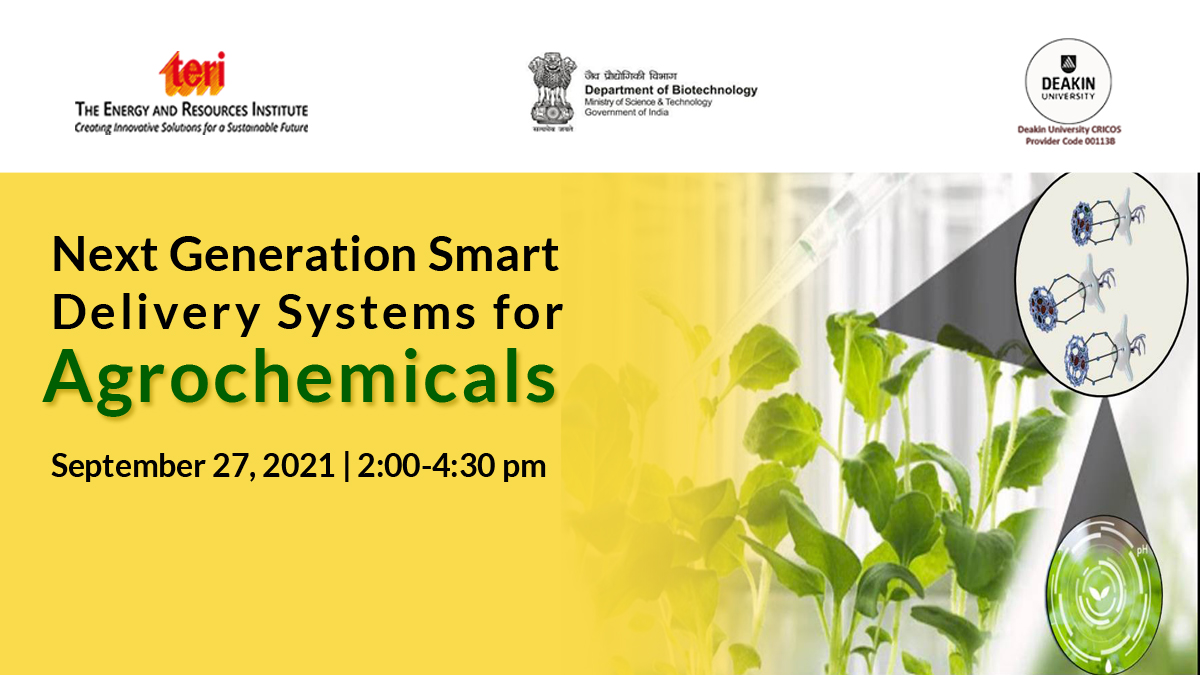Webinar on 'Next Generation Smart Delivery Systems for Agrochemicals'
The webinar aims to shed light on the current status of smart delivery systems in agriculture, highlighting their opportunities and challenges.
On 27 September 2021, 02:00 PM to 4:30 PM IST
The Energy and Resources Institute (TERI) with the Department of Biotechnology (DBT), Government of India, and Deakin University South Asia is organising a webinar on "Next Generation Smart Delivery Systems for Agrochemicals" on September 27, 2021 from 2 - 4:30 PM.
The webinar aims to bring to the fore current status of smart delivery systems in agriculture, highlighting the opportunities and challenges that they bring to the table. With lectures from international and national speakers, the webinar intends to further the understanding of faculties, researchers, scientists, students and industries on various aspects of delivery systems using green nanotechnology that offer low cost, facile method, and controlled-release features.
The current global population is nearly 6 billion with almost 50% living in Asia. The challenge is how to feed the growing population by producing more crops/foods on a stagnant or shrinking landscape with lesser input costs and hazards to the ecosystem. Another adjunct to this problem is how to amplify the income of agricultural producers. Nanotechnology has answers to many of these challenges. Some of the world's largest makers of pesticides, fertilizers, and other farm technologies are betting on nanotechnology to bring unprecedented precision and enhancement of crop and livestock productions.
In recent years, nanotechnology has extended its relevance in plant science and agriculture. Advancement of nanotechnology has improved ways for large-scale production of nanoparticles of physiologically important metals that can be used to improve fertilizer formulations. Consequently, we can expect increased uptake of nano-fertilisers by plant cells leading to minuscule nutrient loss. Nanoparticles have high surface area, sorption capacity, and controlled-release kinetics to targeted sites making them suitable for “smart delivery system.”
This kind of delivery system can increase the nutrient use efficiency through mechanisms such as targeted delivery, slow or controlled release of agrochemicals. Besides, such delivery systems could precisely release their active ingredients in response to environmental triggers and biological demands. With all the promise of nanotechnology, we must mention that the development of the smart delivery system is mostly available at bench-top scale. Commercialization of such nanomaterials for agricultural applications requires large-scale production, testing priorities, risk assessment and regulatory guidance at global level.


